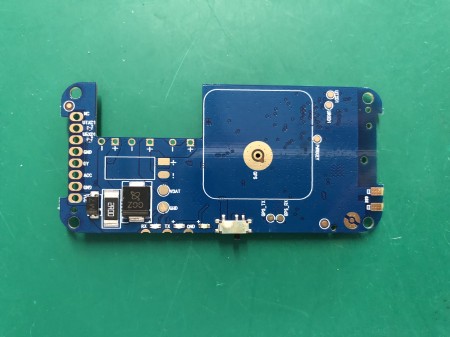 +86 755 2794 4155
+86 755 2794 4155  sales@knownpcb.com
sales@knownpcb.com
-
Shenzhen KNOWNPCB Technology Co., Ltd.
 +86 755 2794 4155
+86 755 2794 4155  sales@knownpcb.com
sales@knownpcb.com

Water-based cleaning process is based on water as the cleaning medium, in order to improve the cleaning effect, a small amount of surfactants, washing additives, corrosion inhibitors and other chemicals can be added to the water (the general content is 2%-10%). And can be in accordance with the specific situation of different nature of pollution on the printed circuit board, in the water-based cleaning agent additives, so that the scope of application of cleaning is wider. Water-based cleaning agent has a good dissolution effect on water-soluble dirt, and then with heating, brushing, spraying, ultrasonic cleaning and other physical cleaning means, can achieve better cleaning effect. The addition of surfactant to the water-based cleaning agent can greatly reduce the surface tension of water, strengthen the penetration and spreading ability of the water-based cleaning agent, and better penetrate into the gap between the closely arranged electronic components, and clean the dirt that infiltrates into the printed circuit board substrate. Using the dissolution of water and the emulsification and dispersion of surfactants can also remove the residue of synthetic active flux very well, which can not only dissolve and remove various water-soluble dirt, but also remove non-soluble dirt such as synthetic resin and fat. For the use of rosin-based flux or water-based cleaning agent to add appropriate saponifier, saponifier is used to clean the printed circuit board and rosinic acid in rosin, fatty acids in fats and other organic acids saponifier reaction, to produce water-soluble fatty acid salt (soap) chemical substances. This is a common ingredient in many cleaning agents used to clean flux and grease on printed circuit boards. Saponification agents are usually alkaline inorganic substances such as sodium hydroxide, potassium hydroxide and other strong bases, and may also be alkaline organic compounds such as monoethanolamine. Commercial saponification agents generally also contain organic solvents and surfactants to clean and remove residues that cannot be saponified. Because saponification agent may cause corrosion to aluminum, zinc and other metals on the printed circuit board, especially when the cleaning temperature is relatively high and the cleaning time is relatively long, it is easy to aggravate the corrosion. Therefore, corrosion inhibitors should be added to the formula. However, it should be noted that printed circuit boards with components sensitive to alkaline substances should not be cleaned with water-based cleaners containing saponification agents.
In the water-based cleaning process, if the ultrasonic cleaning is combined with ultrasonic cleaning, the "hole effect" of a large number of micro-adjusted air bubbles generated during the propagation of ultrasonic waves in the cleaning solution can effectively strip the insoluble dirt from the electronic junction plate. Considering the compatibility requirements of printed circuit boards, electronic components and ultrasonic waves, the ultrasonic frequency used in the cleaning of printed circuit boards is generally about 40KHz.
Read recommendations:


Appointment Experience